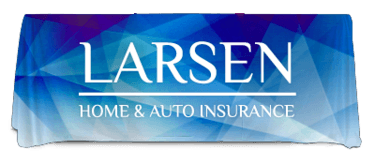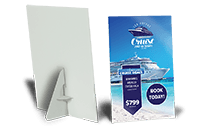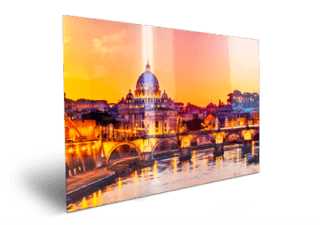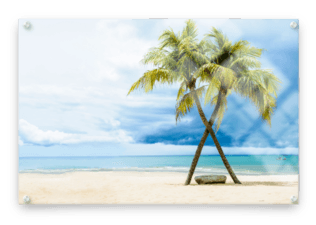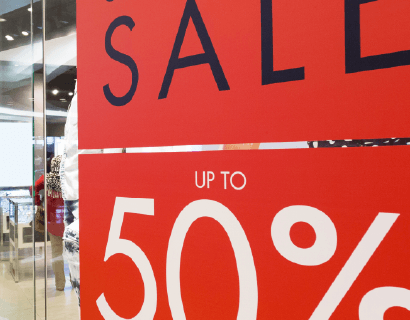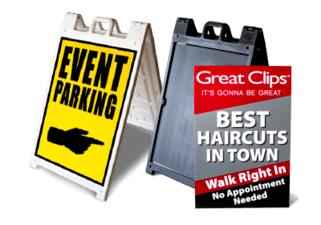In an earlier Signage 101 post, we discussed how adding a UV coating can not only boost the durability of your printed piece but also give it some great visual “pop.”
But there’s another coating option to consider: aqueous coating. As its name suggests, an aqueous coating is water-based. And just as with its UV counterpart, an aqueous coating can provide a printed piece with an eye-catching glossy sheen or matte finish, while also adding protection against abrasion, scratching, fingerprints, and more.
Water World
Aqueous coatings were initially created in the 1970s as a substitute for varnishes. Although varnishes are inexpensive, they have some drawbacks – they can cause yellowing of the printed product over time, for instance, plus they’re relatively slow drying and some varnishes emit VOCs. Aqueous coatings, however, managed to eliminate all of these negatives.
Today, aqueous coatings have been even further enhanced. They now offer better gloss than varnishes, provide more durability, and they produce a smoother feel. All the while, they have retained their earliest qualities as well.
Some basics about their chemistry: Formulated from as much as 60% water, aqueous coatings typically feature an acrylic or a polyester resin as a base. To this, a coating manufacturer might add a wax or silicone to enhance rub-resistance, optical brighteners for a “whitening” effect, and other ingredients depending on the intended application.
Aqueous coatings are usually applied while the piece being printed is still on press (aka “inline”), right over the wet ink, then dried on press (either by air or heat). The result: a thin film coating that serves to protect and enhance.
Additional aqueous essentials:
Glossy and matte: Aqueous coatings are available in glossy and matte versions; the former makes colors more vivid, while the latter tends to reduce the gloss sheen. A so-called “soft touch” aqueous coating will give the printed piece a soft, satiny feel.
Flooding vs. spot coat: Aqueous coatings are almost always applied to an entire substrate face – aka “flooded” – rather than spot-coated or applied to a targeted area; it’s more difficult to spot-coat with aqueous than, say, with UV coating.
Fast-drying: Quick dry time is a key aqueous attribute, which then allows for quicker turnaround on the production side of things.
Durability: Aqueous coatings hold up well; they resist yellowing or cracking.
Write on them: Some aqueous coatings can be written on with a ballpoint pen.
Go green: Their watery nature allows the finished, printed product to be recycled with limited environmental impact; they’re recyclable and biodegradable.
Water, Water Everywhere
So now you know what goes into making aqueous coatings and the advantages they offer – but which printed products most benefit from an aqueous coating?
As noted earlier, their primary use is in boosting visual impact with glossy or a matte texture, and in also protecting the printed piece from abuse. Here are just a few applications where you’ll find aqueous coatings frequently utilized:
Brochures – A glossy aqueous coating will amplify a brochure’s optics, helping it stand out on a tradeshow counter, samples table, or lobby desk.
Door hangers – Ideal for advertising a product, promoting a political candidate, or introducing your new services, door hangers get a lot of jostling and endure some challenging climatic conditions. Give them an aqueous coating to help ensure the message remains readable and vibrant.
Table tents –Restaurants, bars, lounges, event seating, weddings, and just about anywhere there’s table seating (or even just tables) can benefit from table tents. An aqueous coating will add pizzazz.
In all printed pieces, two other important factors will come into play when it comes to durability, the vibrancy of the graphics, and the overall texture. The first factor is the substrate or material itself – a heavier paper will, of course, be stronger than a lighter-weight paper; and a substrate’s own texture might be all that’s needed for the feel you’re seeking. The second factor is the ink that’s used in printing your graphic or message – inks that are both durable and resilient can ensure your message has true staying power.
Aqueous vs. UV
Trying to decide between an aqueous coating and a UV coating? Depending upon the printer’s coating machinery, the application, and the paper stock being used, that choice might be out of your hands. However, if you can choose, here are a few differences between the two coating types to keep in mind:
- Aqueous coatings are economical, and generally less expensive than UV coatings.
- UV coatings can offer a higher degree of gloss than aqueous; in addition, UV coatings will typically also offer better protection against abrasion.
- It was noted earlier but worth repeating here: It’s much more difficult to spot-coat with aqueous, so UV coatings are usually used when choosing just a small area to coat rather than flooding an entire side/face.
- As with aqueous coatings, UV coatings are recyclable, but they’re much slower to biodegrade, so aqueous coatings are the “greener” choice if that’s a factor for you.
Our team here at Signs.com can answer any questions you might have about aqueous coatings (or UV), and help you make the best coating choice for your project.













